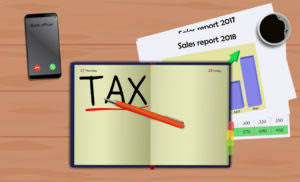
The master budget allows company directors to forecast the actions they will need to take in the upcoming quarter or year to meet their goals. You can gather data for a sales estimate by surveying your sales team, analyzing past trends, or consulting with outside research firms. Once you have compiled a sales budget, you’ll need to develop a production schedule, budget for labor, materials, administration, and other costs, and calculate the cost of goods sold. Also add the capital expenditures budget and the cash-flow budget to arrive at a budgeted balance sheet. It provides a comprehensive financial plan that guides the company’s financial operations throughout the year, enabling managers to monitor performance against the plan and take corrective action as necessary. By preparing and using a master budget, companies can allocate resources effectively, control costs, and achieve profitability.
In diagram below, we depict a flowchart of the financial planning process that you can use as an overview of the elements in a master budget. We emphasize the master budget because of its prime importance to financial planning and control in a business entity. A master budget consists of a projected income statement (planned operating budget) and a projected balance sheet (financial budget) showing the organization’s objectives and proposed ways of attaining them. The production budget is then broken up into budgets for materials, labour, and overhead. Overhead is generally the fixed costs that support manufacturing – such as rent for the premises, costs to maintain machines, power to run machines. Current costs are used to develop standard costs for the price of materials, the direct labour rate, as well as an estimate of overhead costs.
How To Use a Rolling Budget
A master budget is one that includes two areas, operational and financial, each of which has its own sub-budgets. The operating budget spans several areas that help plan and manage day-to-day business. The financial budget depicts the expectations for cash inflows and outflows, including cash payments for planned operations, the purchase or sale of assets, the payment or financing of loans, and changes in equity. Each of the sub-budgets is made up of separate but interrelated budgets, and the number and type of separate budgets will differ depending on the type and size of the business. The direct materials budget uses information from the sales budget to compute the number of units necessary for production. This information is used in other budgets, such as the direct materials budget, which plans when materials will be purchased, how much will be purchased, and how much that material should cost.
- If you’re not manufacturing items, you can skip the production budget and focus on the materials budget instead.
- For example, maybe you overestimated your sales and over-spent on ingredients that ended up in the trash.
- A master budget is a central planning tool that gives an overview of a business’s finances, outlining cash flow forecasts, financial statements, and the financial plan.
- They can also identify opportunities to improve efficiency, reduce costs, and increase profitability.
- It’s a framework for understanding revenue, profit, expenses, and debt load, and it shows how a company is putting its capital to work.
- This is not a task that should be delegated to your bookkeeping or accounting clerk, but instead should involve management and ownership.
Thus, the logical starting point in preparing a master budget is the projected income statement, or planned operating budget. The direct materials budget lets managers know when and how a master budget consists of much raw materials need to be ordered. The same is true for direct labour, as management knows how many units will be manufactured and how many hours of direct labour are needed.